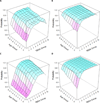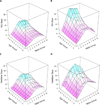Predicting resource utilization in burn treatment
- PMID: 24642762
- PMCID: PMC4105127
- DOI: 10.1097/BCR.0000000000000076
Predicting resource utilization in burn treatment
Conflict of interest statement
The authors have no conflicts of interest.
Figures






References
-
- Mullahy J. Specification and testing of some modified count data models. Journal of Econometrics. 1986;33:341–365.
-
- Rose CE, et al. On the use of zero-inflated and hurdle models for modeling vaccine adverse event count data. J Biopharm Stat. 2006;16:463–481. - PubMed
-
- R Core Team. R: A language and environment for statistical computing. Vienna, Austria: R Foundation for Statistical Computing; 2013. URL http://www.R-project.org/
Publication types
MeSH terms
Grants and funding
LinkOut - more resources
Full Text Sources
Other Literature Sources
Medical

